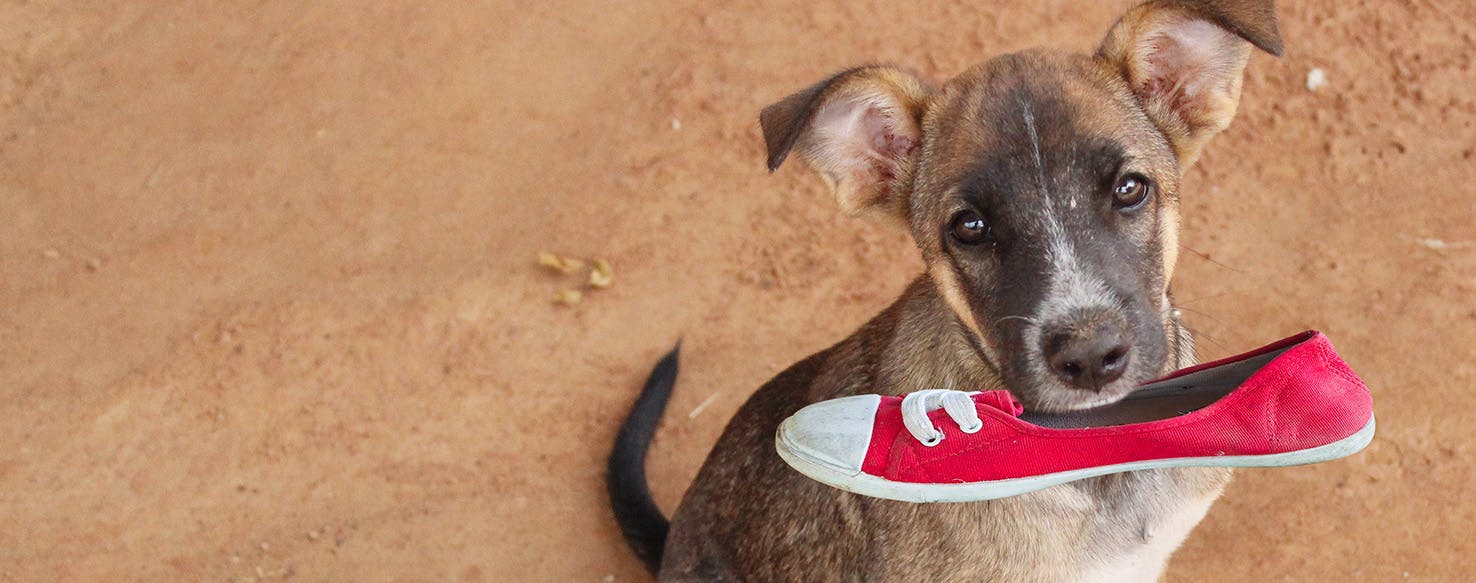If you’re like me, you always look forward to opening your front door because you know your dopey dog will bound up to you and cover you in slobber. But whilst your dog (hopefully) looks different than you, does his body and brain share serious similarities? Could your dog suffer from the same illnesses and ailments as you, say pica for example?
Humans with pica crave and eat non-food objects. If your dog were to have this, you would need to handle this condition with caution as eating non-food objects could clog your dog's passages and lead to serious medical complications. But can dogs even suffer from pica?
Most humans think of eating disorders as conditions only humans suffer with, but in fact, dogs can 100% suffer with eating disorders such as pica! Pica can cause the same serious damage to your dog’s body as it can to human bodies.
There are a number of symptoms to look out for if you suspect your dog has pica. Is your dog consistently vomiting or suffering from diarrhea? Does your dog have loose stool? Does your dog have chronic bad breath? All of these could be indicators that your dog is suffering with Pica.
But what causes your dog to develop pica? A wide variety of things can bring on the behavior, from anxiety and stress to boredom and depression. It has also been put forward that a lack of socialization can cause pica. There are also a number of medical conditions that can trigger pica. Immune-mediated hemolytic anemia, hookworms, intestinal parasites, inflammatory bowel disease, plus malnutrition and stomach tumors can all cause pica.
How will your vet go about diagnosing the condition? After looking at your dog’s medical history and talking through their diet, bowel movements, behavior, and activity level with you, a physical examination will be done. Your vet will listen to your dog’s lungs and heart, look in their ears and mouth, check eyes for redness or discharge, plus palpate the stomach and lymph nodes.
detailed information on the symptoms, causes, and diagnosis of this unusual condition.
How Do I Treat My Dog’s Pica?
Treating pica in your dog will depend on whether it is a behavioral issue or as a result of an underlying medical condition. If it is a behavioral matter, your vet may wish to increase the amount of exercise your dog gets. Walking your dog on a leash will also prevent them eating non-food objects. You will have to keep your dog away from the non-food objects they’ve been eating. Using bitter tasting sprays on the object can be an effective deterrent.
If the pica is as a result of a medical condition, an appropriate plan will proposed by your vet. If your dog has a gastrointestinal blockage, they will have to be hospitalized and undergo surgery. Ultrasounds and radiographs may be needed to identify blockages and an endoscope may be required to remove foreign objects lodged in the stomach.
Recovery from pica will be dependent on the cause and individual cases. If it’s behavioral, several weeks or months may be needed to change your dog’s behavior for the long term. If your dog needs an operation, it may be months until they are fully healed.
It is often helpful to hear first hand accounts from owners of dogs with
, plus hear answers to FAQs from our in-house vets.
How Is Pica Similar in Dogs and Humans?
In many ways, pica in dogs shares a lot of the same symptoms as pica in humans and other animals. Some of these common symptoms may include:
-
-
-
Straining during bowel movement, or an inability to move bowels
-
Excessive burping and abdominal contractions
-
How Is Pica Different In Dogs and Humans?
Yes, in many ways pica manifests itself similarly in dogs, humans and other animals. However, there are also certain differences in symptoms and causes worth pointing out. Some of those differences are:
-
In dogs, excessive drooling may be a sign of pica, but this is not a symptom seen in humans.
-
Chronic bad breath can be a strong indicator of pica in dogs, but this symptom is much less common in humans.
-
It is harder to identify whether a dog has pica, as dogs will frequently eat non-food items without knowing that what they're eating has no nutritional value anyway.
Buckwheat was a 16-year-old Chihuahua who suddenly began eating cigarette ashes. The owners were concerned firstly about why Buckwheat would try and eat the ashes and secondly, about the negative impact it may have on his health. The vet helped identify that Buckwheat was eating unusual things because he was missing certain nutrients in his diet. By simply altering his diet and keeping ashes out of his reach, he was back to his healthy self in no time and stopped snacking on tobacco-related goods!


